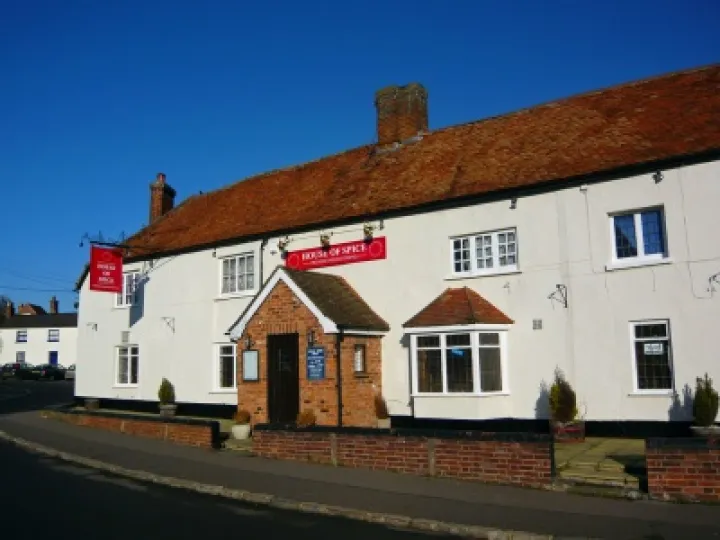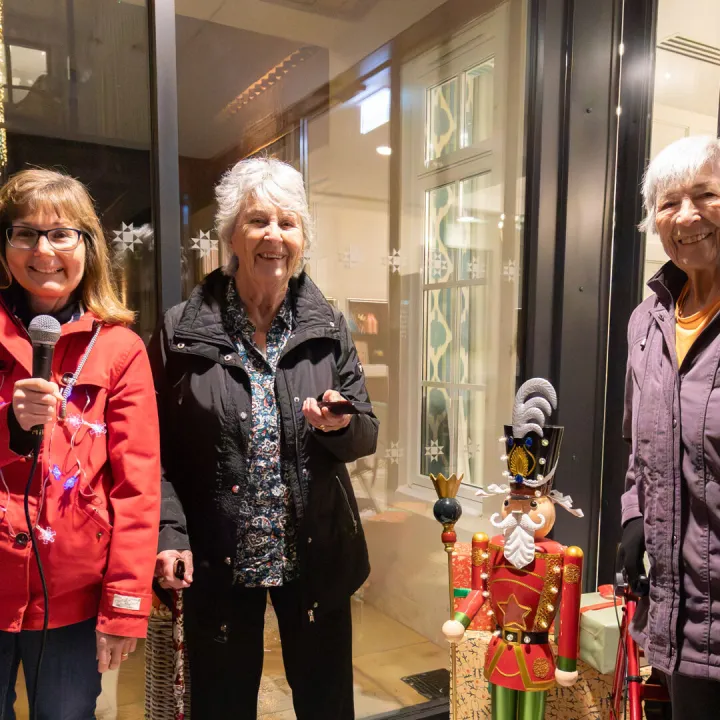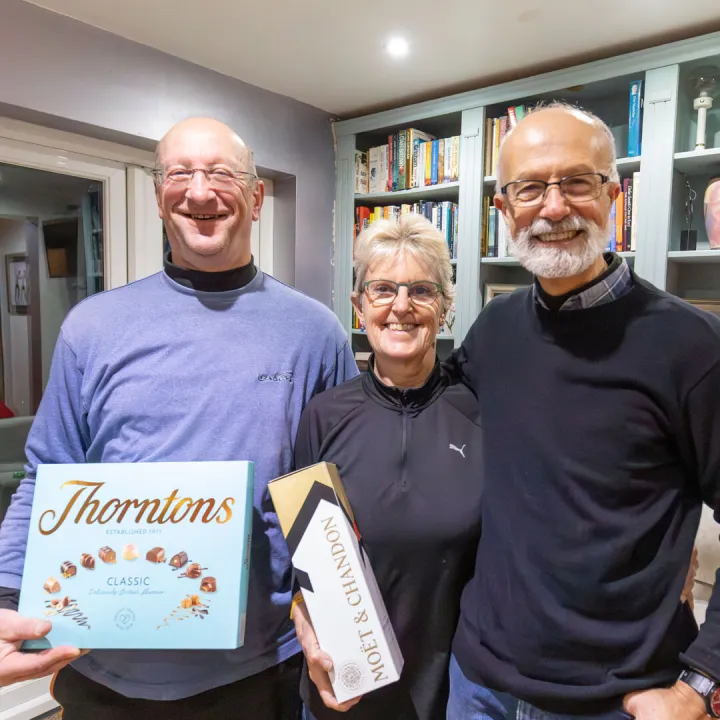House of Spice Development
Concerns have been expressed by many residents over the development of the 'House of Spice' and the Betting Shop for housing. The most frequently voiced concerns relate to loss of the dining and betting facilities and the potential car parking challenge for visitors to these new homes (see the Share & Chat section for specific comments).
Haddenham Village Society (HVS) has also voiced its concerns, and its executive committee is keen to encourage residents to consider writing to AVDC planning department to express their own views on this proposed development.
You can view the plans here.
Here is the view of the Village Society:
Proposed response to planning application for the 'House of Spice' site (Planning application 15/00980/APP – 19-20 Fort End).
This is intended as a discussion paper, and to seek the views of HVS members and residents and promote exchange of thoughts. Planning application proposes to convert the buildings at 19-20 Fort end (currently the House of Spice) to residential accommodation, and this paper suggests grounds for objecting. The design principles are to be applauded in being sympathetic to conserving the character of the building and for being in line with HVS criteria: our principal concern is the loss of yet another amenity within the village, as well as the argument of the developers that the current status of the Neighbourhood Plan means it can have little weight in deciding on the application for change of use.
The case
Through their agents, Jake Collinge P.C. Ltd of Thame, Richmond Assets Ltd have submitted an application for change of use and development of the site at 19-20 Fort End, which is occupied by 'House of Spice' and the bookmakers shop until it closed recently. The change of use is from various categories of business (defined in the application as class A2, A3 and B1) to residential accommodation. The development involves some demolition, but essentially conserving the listed building, and converting the space into 7 residential units, consisting of 3 one-bedroom dwellings (one house and two maisonettes) and 4 two-bedroom houses. The proposal includes an increase in the number of parking spaces from 8 to 11.
The HVS planning subgroup has considered this proposal, and would ask HVS members and residents to consider opposing the proposed change of use from a restaurant (A3 use), and the plan to increase the number of parking spaces from 8 to 11.
Background
1. We note that the proposal states that 'Given that the Neighbourhood Plan is still required to progress through a number of stages before being 'made' it follows that the Plan is currently of only limited weight in the decision making process. Accordingly, the policies of the draft Plan are not reviewed as part of this application' (p.13 par 5.15).
However the Secretary of State has recently called in and refused major planning applications on the grounds that Neighbourhood Plans were in the process of elaboration. We believe that both the Parish Council and AVDC should refuse to accept this argument. On that basis, the Haddenham NP is explicitly concerned to protect existing businesses and facilities within the village.
2. Instead of referring to the Haddenham NP, the proposers relate the application to the policies of AVDLP 2004, which state that 'the Council will resist proposals for the change of use of community buildings and facilities for which there is a demonstrable local need. Regard will be had to those considerations set out above in relation to Policy GP32.' (p.10, para 5.9) In para 6.4 (p.15) the proposal states: 'insofar as it relates to the principal A3 (Restaurants and Cafe) use on the site, there are no policies within the adopted AVDLP that seek to protect such uses. Indeed, these fall outside the definition of community facilities in the pre-amble to policy GP93, and are not referred to in Policy GP32. Furthermore, although the restaurant currently generates some employment, the use (A3) falls outside the definition of an established employment use (B1-B8) which are covered by Policy GP17. As such, there is no objection, in principle, to the loss of the existing A3 use.'
However, according to government guidelines, changes in use from A3 class to residential use requires approval, and although local district councils are empowered to waive the requirement of obtain agreement to change of use, AVDC website provides no specific waiver of that requirement that we can find. Furthermore, it is not self-evident that there is no 'demonstrable local need' for a restaurant on the site. Thus there seems to be a prima facie right to councils, residents and to the wider local community to object to such an application for change of use. We think that HVS should encourage residents to exercise that right, and indeed lead the way.
3. Further, on p.15 para 6.5, the applicants specifically cite as precedents the agreements to change of use of Peking Rendezvous (High Street). Regarding the change of use of part of the site from a bookmakers, para 6.7 notes that precedents for changes of use of A2 class businesses (the banks, the Paper Shop on Station Road, and the Beehive (subsequently off-licence) on Churchway. Apart from the businesses they cite, in the last 12 years the village has seen similar changes of use accorded to the Post Office (Churchway, opposite Banks Park), the Red Lion, and most recently, Ivor Newton's joinery. They conclude that 'for the reasons outlined, it is considered that the principle of the proposed development is acceptable'.
We believe that if this reasoning is accepted, no business in Haddenham can be protected from change of use to residential accommodation. And yet, as noted above, the Haddenham NP is very concerned to protect existing amenities.
Basis for objection
4. Haddenham NP, and through it, the Parish Council and its residents, have gone out of their way to accept the need for very significant increases in residential accommodation (some figures suggesting a 25% population increase) over the next few years). Against this background, four arguments suggest themselves:
a. Existing amenities and facilities such as this should be offered muscular protection (if not actually increased in number) to offset the increase in population and contribute to maintaining a sense of community.
b. Maintaining such facilities can contribute to enabling the community to achieve its environmental ambitions, by helping to limit unnecessary travel.
c. If amenities are non-viable, objections may fail, but in this case it is inconceivable that a restaurant would be commercially non-viable in a community with the demographic of Haddenham and the wider South Bucks/South Oxfordshire area.
d. We note that the application gives no numbers of employees, and claims that, as with the PC's view regarding the change of use of the Spicer Hallfield site, 'significant alternative employment opportunities exist' elsewhere in the village. Yet in the current economic climate we believe that any loss of employment opportunity should be resisted. Indeed we could reply in similar vein that the NP provides for substantial numbers of new low cost housing elsewhere in the village reducing the need for this particular development.
5. In the absence of any statutory constraint on the change of use of these premises, but also in the defence of the HNP, we suggest that HVS and the wider community is in a position to mount an effective and worthwhile objection to this proposal, and given the wider factors at stake, should take the opportunity to do so.
Other objections
6. The proposed residential development itself is open to two other objections:
a. The provision of 11 parking bays for 7 residences is almost certainly inadequate: if most households have two cars, 12 bays would likely be a minimum requirement for residents, but in addition, parking space would also be needed for visitors, delivery vehicles and tradesmen's vehicles. As a consequence, either the amount of parking space should be increased to 15 (although this could only be done at the expense of the proposed garden areas, which would make the development less attractive), or else the number of dwellings should be reduced from 7 to 5. Failure to make this provision would exacerbate the existing problems of local on-road parking, to the detriment of the Conservation Area.
b. All proposed building developments should include a commitment to park all contractors' vehicles on the site, an undertaking which is currently lacking.







